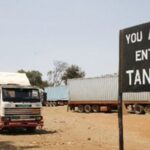Kenya’s aviation industry is heading into uncertain times as discontent grows among workers at Jomo Kenyatta International Airport and Wilson Airport.
While the Kenya Civil Aviation Authority continues to assure the public that operations are smooth and nothing is amiss, the reality faced by employees paints a much different picture.
Staff have voiced concerns over issues that have dragged on for years, leaving them frustrated and feeling neglected by their employer.
The grievances raised by the Kenya Aviation Workers Union cut across unpaid overtime, stalled promotions, and the persistence of contract-based employment that denies workers stability and long-term benefits.
Over 500 employees are said to be stuck on fixed-term contracts despite working for years, something that has bred anger and resentment. These workers argue that their loyalty and service to the industry should have earned them confirmation, yet management has continued to keep them in limbo.
The union says this is exploitation and has vowed that unless something changes, employees will no longer tolerate the situation.
At Wilson Airport, workers say they have not been paid overtime for more than six months, a matter that has lowered morale and left many feeling cheated. Employees complain that they have consistently put in extra hours to keep operations running, but the compensation due to them has not been forthcoming.
The union has written letters and lodged complaints, but they claim their appeals have been ignored. Instead, KCAA has maintained a polished public image, insisting everything is under control while those at the frontlines quietly suffer.
Signs of discontent are already being felt by passengers. Travelers have reported long queues, slow check-ins, and frequent delays, raising suspicion that staff have begun a silent go-slow to express their frustrations.
Whispers from within the airports suggest that workers are deliberately slowing down their output as a form of protest. If these murmurs are true, then the official strike called for September 30 may simply confirm what is already taking place behind the scenes.
KCAA’s leadership, led by Director General Emile Arao, continues to stress that statutory responsibilities remain intact and that Kenya’s airspace is safe and compliant with international standards. While this reassurance seeks to calm the public, insiders argue that the real situation is far from stable.
With morale at its lowest point and frustrations going unaddressed, employees believe their only option is to down their tools.
For passengers, airlines, and businesses that rely on air transport, the prospect of a strike brings the risk of massive disruption. Cancelled flights, delays, and confusion may soon become the norm if no urgent solution is found.
The union has made it clear that unless their grievances are addressed by September 30, operations will stop. This looming deadline has now put the government, KCAA management, and airlines under pressure to act swiftly.
What is unfolding is a sharp contrast between official assurances and worker realities. On one side, KCAA maintains all is well, but on the other, employees point to broken promises, contract exploitation, and ignored grievances.
If the strike goes ahead, Kenya’s airports risk grinding to a halt, exposing the fragile state of an industry that cannot afford instability. The pressing question is how long authorities can continue to delay action before the aviation sector is thrown into crisis.





















Add Comment